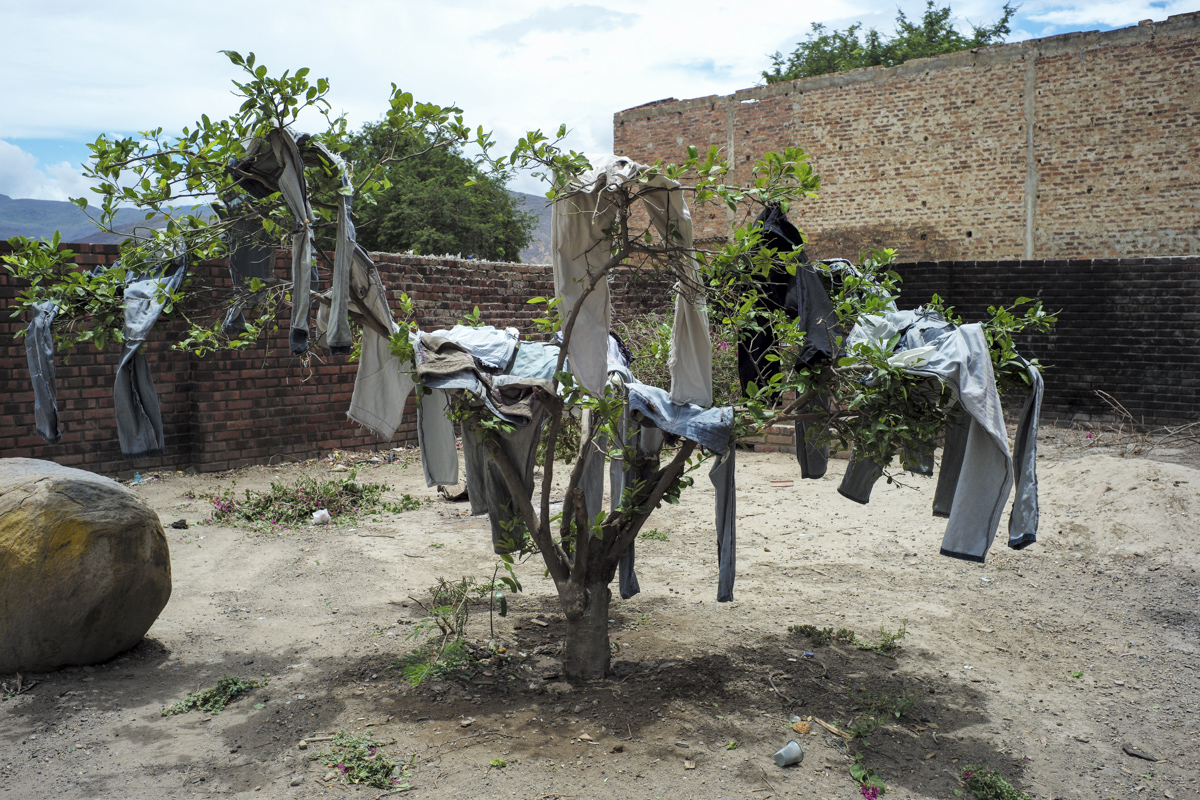When Ronald Pizzoferrato tried to understand migration, he was already a migrant himself. He had gone from Venezuela to Switzerland and there he had bought his first camera. He still didn’t know that he was a photographer. In Caracas he had been a street graffiti artist: he knew the city and its walls. He had friends in every corner: people who helped him navigate the most dangerous corners to paint walls. In Switzerland the plan was different: to be a construction worker, to escape the crisis that by 2014 was already making itself feel strong in his country.
Ronald “Malandro” Pizzoferrato is 32 years old, he is Italian-Venezuelan and likes to talk about what he knows. Caracas, where he grew up, is one of the most violent cities on the planet. On his return to the city he wanted to understand why. That led him to meet the underworld that he reflects in Plomo, his project. He looked for those violent signs that allowed him to elucidate to what extent the violence affected society. He used ethnographies and netnographies, which is the same but on social networks.
He also visited UNHCR’s Maicao Comprehensive Care Center and shelters that receive Venezuelan migrants in Bogotá, Cúcuta and Riohacha. He was intrigued by the lives of those people who migrate in a precarious way, and who carry their most precious objects.
Ronald is not sure if he calls himself a photographer, visual researcher or artist. What he is sure of is that his path began when he made graffiti on Caracas nights. That made him spend time in the streets, at dawn, walk a lot, run into problems and see “things that an ordinary citizen would not see.” And that, he says, is what he shows in his work.
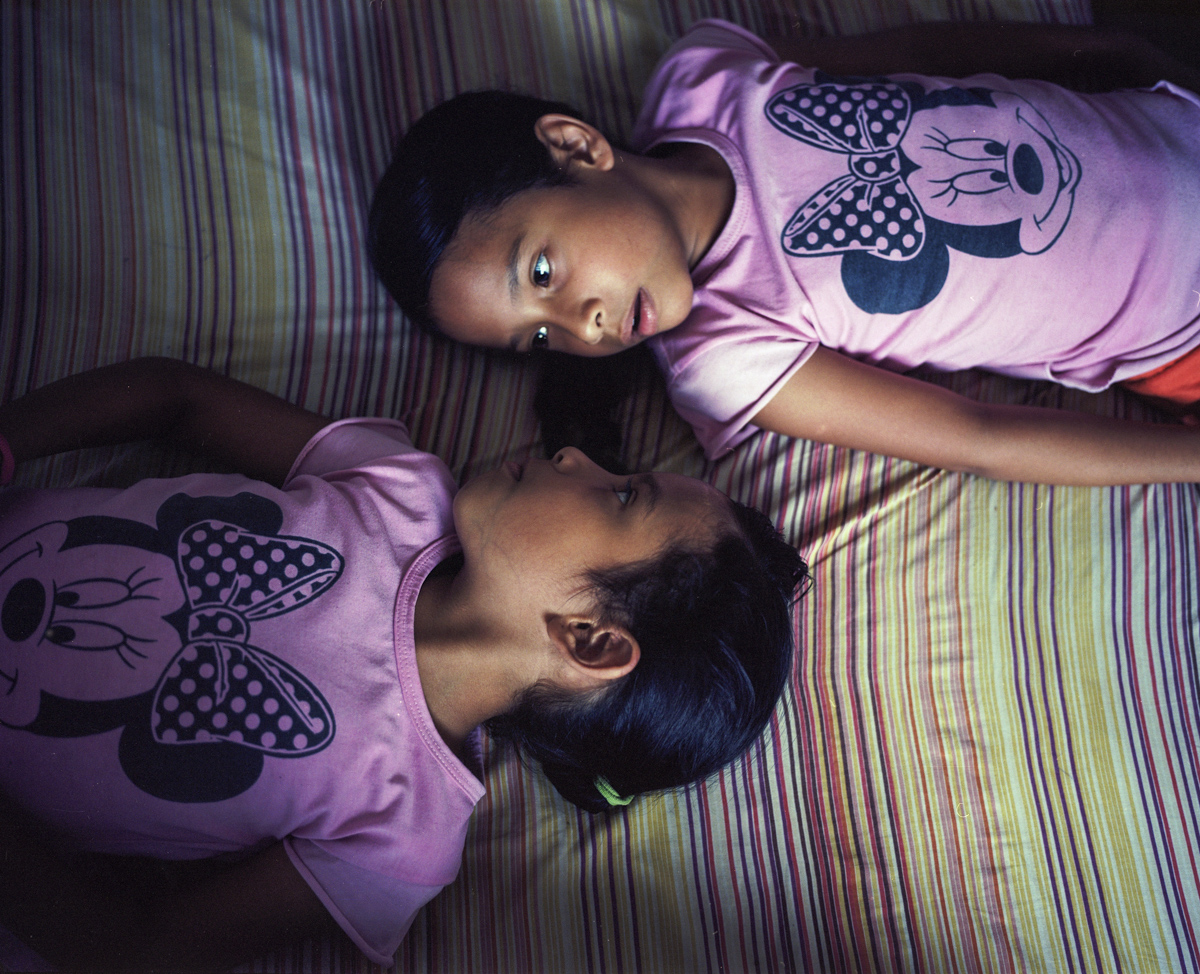
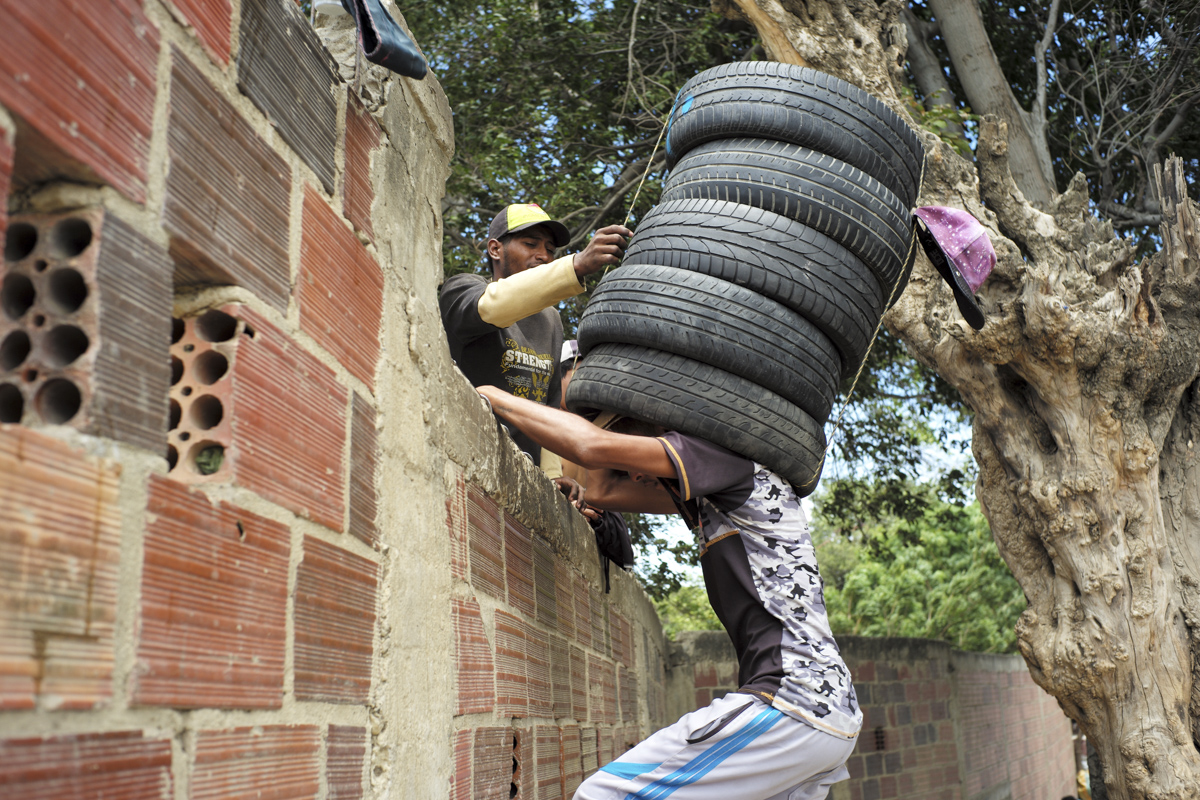
How did you approach the world of photography?
My development as a photographer or visual researcher is rare, because I don’t consider myself a photographer. In Caracas I did a couple of courses. I had the opportunity to do two photography courses when I was nineteen. I have never been part of a circle nor do I have an academic background. Basically, I did that course because a friend invited me. I went to Switzerland in 2014 and worked in construction, a typical migrant job. There I bought a camera and started taking pictures. And so every time I traveled to visit my family, I began to document some situations in Venezuela. That happened in the years when Venezuela entered that crisis in which the worst began.
When I returned to Switzerland with those images, a group of photographers friends saw them and that was the beginning. Then, for a year, I did photojournalism but got tired. It was always the same: people stirring trash and stories about how the revolution destroyed society.
Two years ago I had the opportunity to present my work at the Zurich University of the Arts and I won a scholarship to do a master’s degree. There, what I tried to do was develop the effects of identity, of violence that is part of Caracas society in an inherent way. I began to see how violence is also consumed through social networks, digitization, and analyze the role of gender. I am also interested in violence at the political level and how violence is consumed even at the linguistic level. In March I will publish the book on the Plomo project.
Venezuela, even before the arrival of the revolution and all this, was already one of the most dangerous cities in the world. In the last 15 or 16 years we have always been in the top five, sometimes we have been in place 1 or 2. Violence has always been a dominant factor in our city: whether you are rich, poor, man, woman, belonging to any race or creed. What I began to investigate was how this violence began to create mechanisms, both in communication and in the dynamics of the city itself.
Something very important that I always say is that I do not defend violence but neither do I condemn it. Many people try to confuse and say that I make a certain apology for violence and it is just that I consider myself a person who is doing that research. So far, the violence had only been counted by judging it. What I wanted was to understand at what levels violence has influenced society.
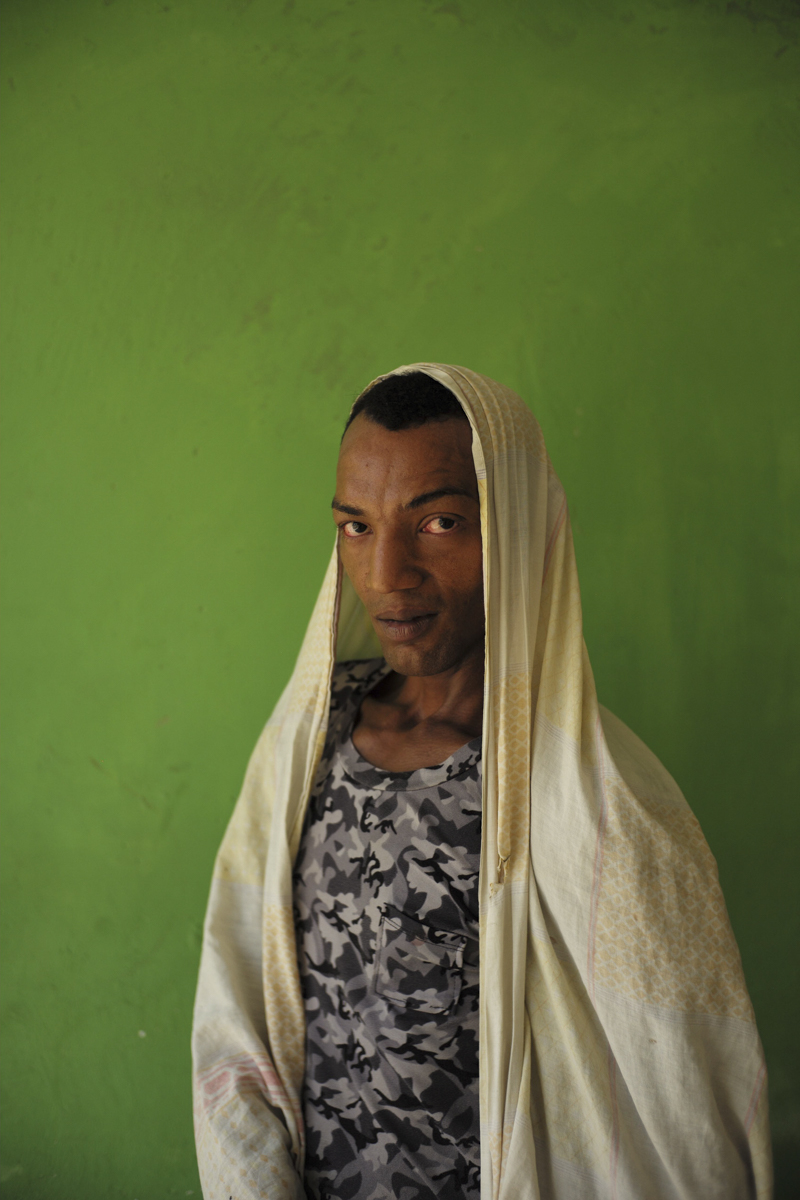
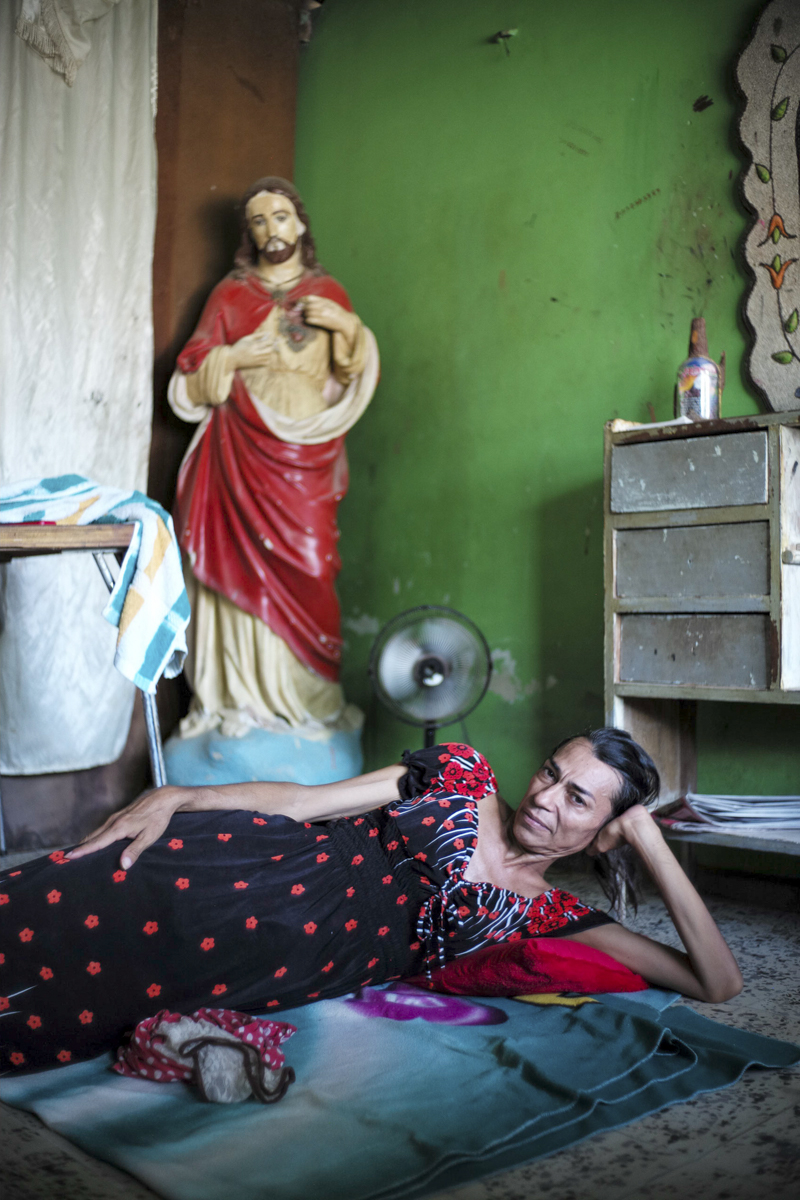
And how did this interest in these topics arise?
And how did this interest in these topics arise? I used to do graffiti. I come from a lower middle class place and being a teenager and a graffiti artist led me to see the city from another perspective. You have to be on the street all the time, at dawn, walk, have problems. Many times you see things that normally a citizen on foot would not see. That relationship made me have a great network of cousins, friends, both people who live in affluent areas and people who live in popular areas. Because something that happens in Venezuela, mainly in Caracas, is that there is a great division of classes but in parallel all those classes are mixed.
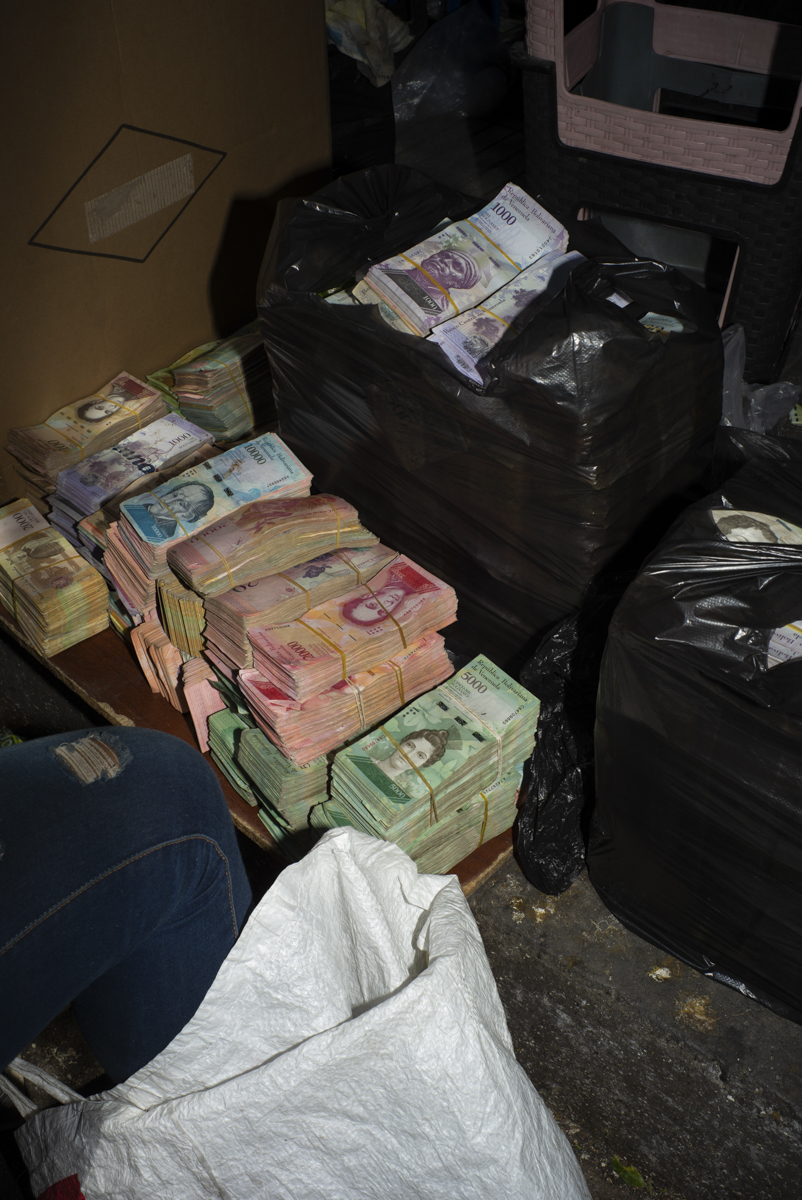
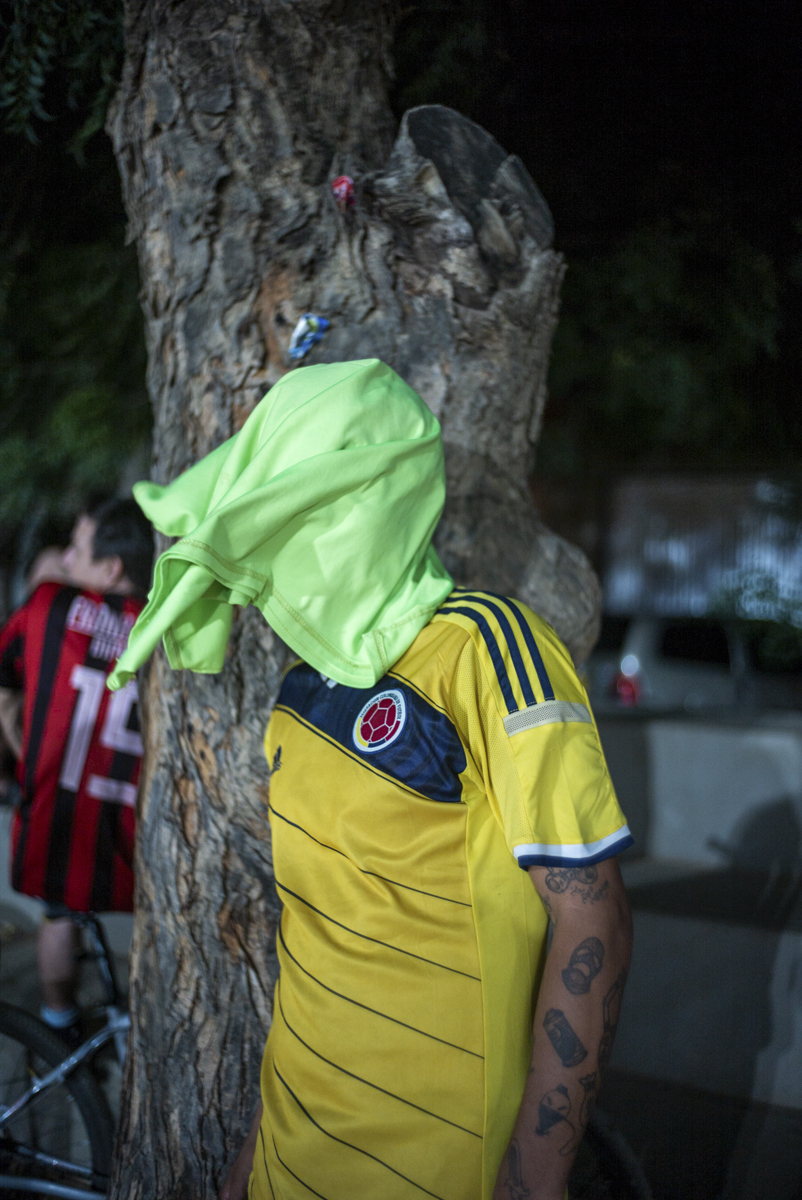
Do you have a work methodology?
I don’t like to work on subjects that I don’t know. It seems to me in some way super colonial and quite pyramidal in the sense of “I am the photographer, I am going to talk about a certain topic”. That is why Plomo is my first project, because I am an inhabitant of Caracas and I come from there.
I developed this research with different methodologies. I work a lot with ethnography: I do different work in the field such as participatory interviews, cultural surveys, I do collaborative work at the digitization level, I work a lot with archive and archive photo collections. I also work with an anthropological methodology called netnography, which is research through social networks. That is what I did, accompanied by my photograph. It is where I identify and locate those violent symbols and signs that are consumed in Caracas.
I also work in a multidisciplinary and collaborative format. Both that of the migrants and that of Caracas are not just my projects, I am far from that individualization. I work a lot with sociologists, anthropologists, people in the field, other photographers, and with audiovisual producers.
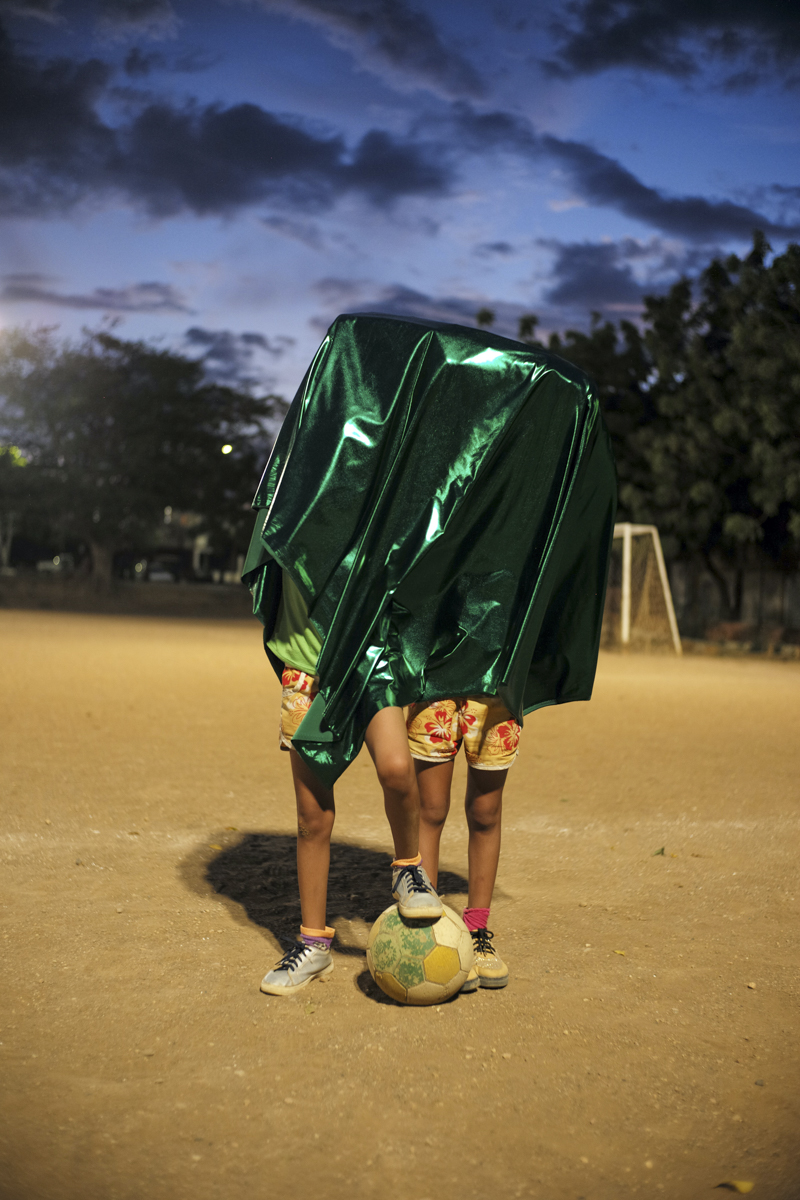
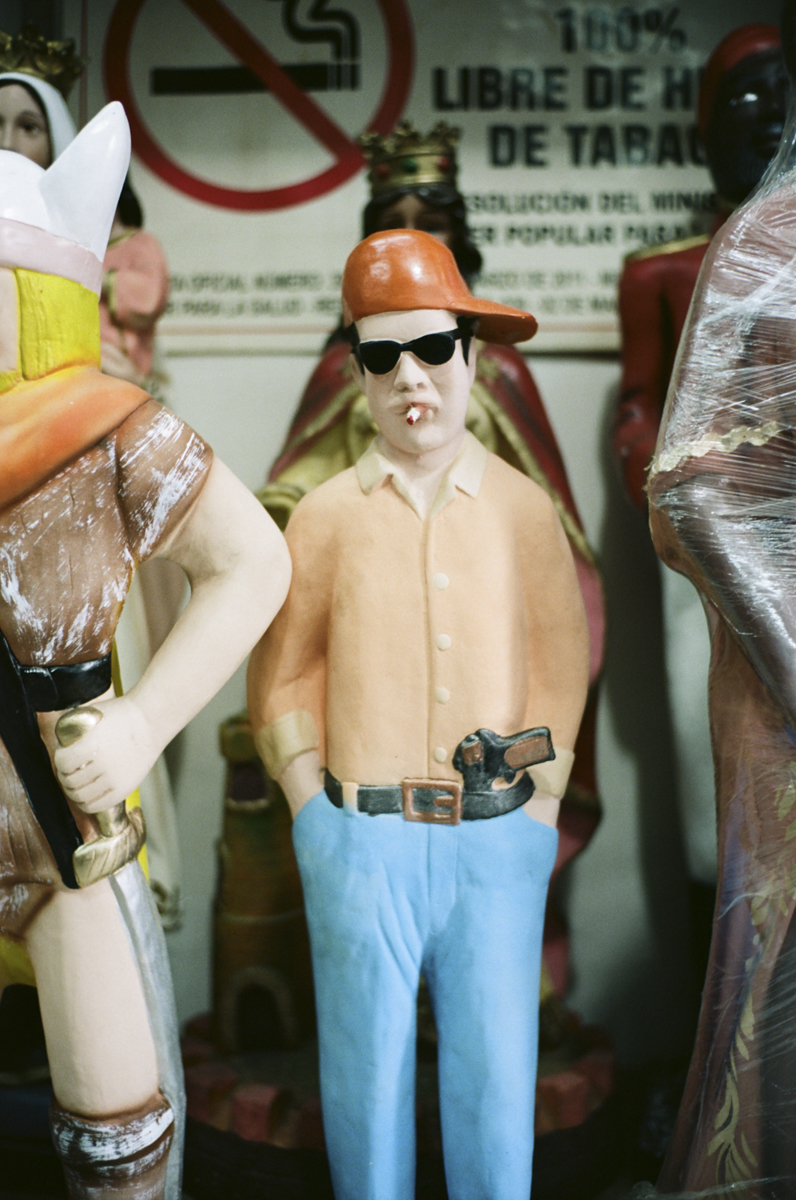
Tell us about the project on migrants
The thing about the migrants was because, for five years, it is my situation, but in another context, in Switzerland. A year ago I got an assignment for the border with a Swiss media and I spent two months covering all that part.
I went to the special attention centers and was struck by the endless objects that these migrants carried. It was all quite colorful. I am very obsessive with this visual part. There were people who, perhaps, had been walking for three or four months, trying to get to Colombia, or to other destinations such as Chile, Peru, Argentina, and they carried things with them that did not mean much to one and had a special meaning for them.
I started researching those meanings and found quite a bit of theory. That caught my attention because I don’t want to isolate the object per se, nor do I want to do the typical migrant story, but rather a combination. Why do people carry these objects, how much does it matter to them, what meaning and semantics do they have from the moment they carry them until the end of their journey? There are even many objects in which the meaning changes as the journey happens.
I also noticed that there are many objects created from a necessity in the migration. In the portfolio there are some headbands that the migrants put on their heads and with that they carry the kitchens, the suitcases; they are like headbands. That object is already commercialized at the border, now you can buy it.
It is a project that I started last year. Now I returned to Switzerland, I put together a portfolio, I presented it to a Swiss Institution from which I will receive funds. So now in February I will return to finish this.
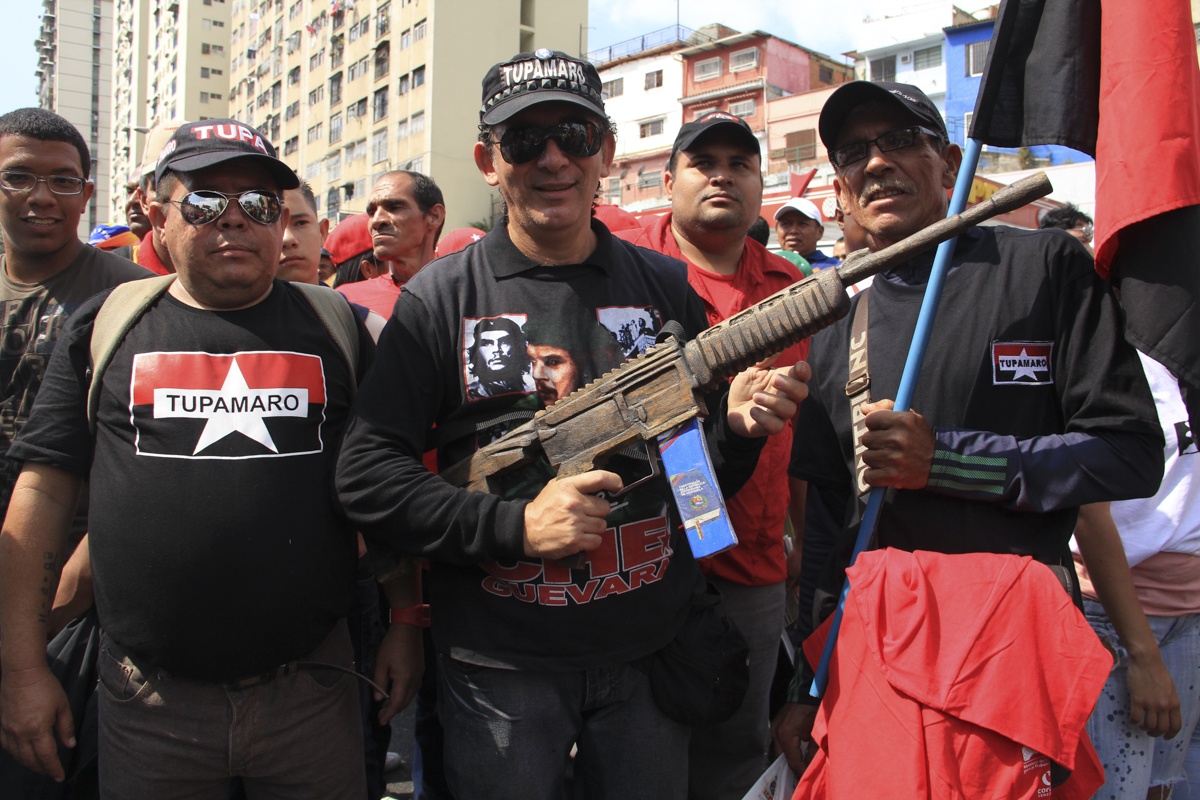
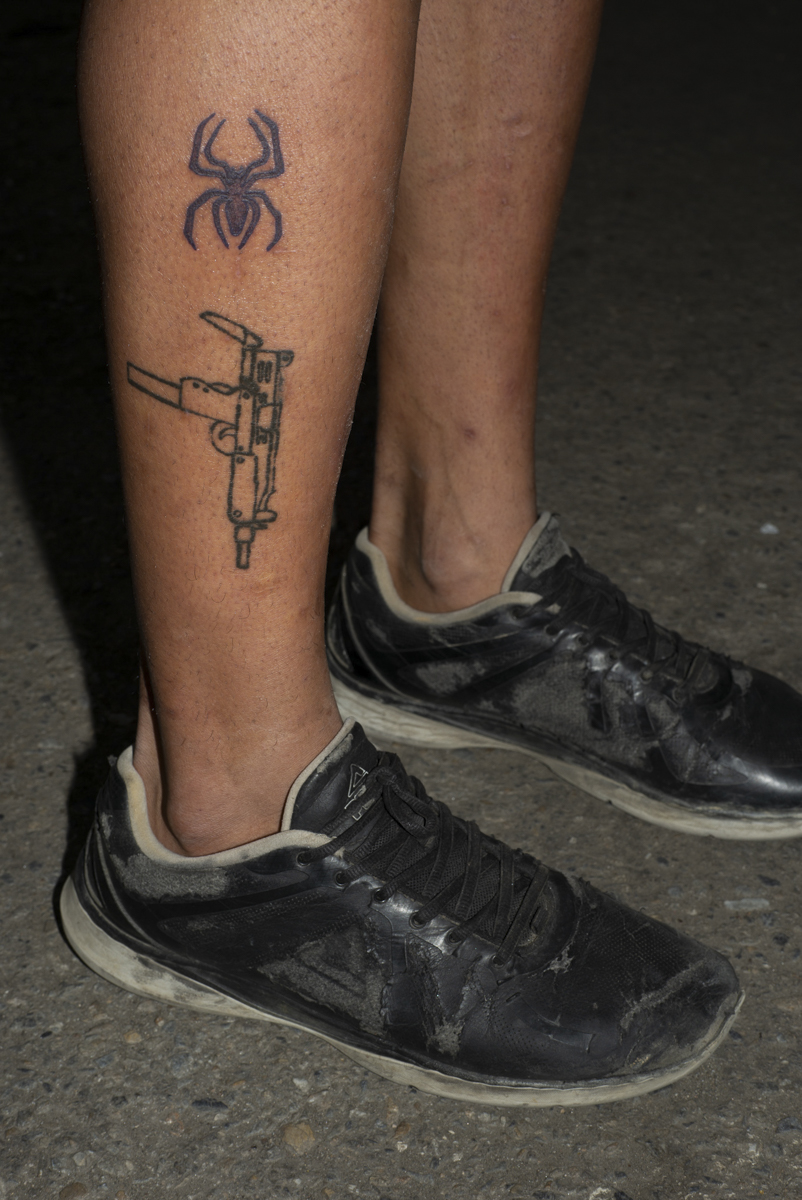
What did you do when you arrived in Switzerland?
I was a laborer, I worked in construction. I left because I met a Swiss corduroy from the graffiti scene who went to Venezuela in 2008. And, you know, graffiti is somehow a cult. They always told me “when you want to go, come” and I left in 2014 when Venezuela was not yet so in decline. I arrived and worked four years in construction and it was not until two and a half years ago that I started with photography, little by little.
Something peculiar happens to me: at first, when I was not very clear about what I wanted to do in Venezuela, I was crazy. Just today I can tell you more clearly all this about the identity and semiotics of the violence in Caracas; but imagine three years ago. At that time the Venezuelan photographic niche did not understand much and it is not that there was a rejection, but people said “this is another crazy person.” The institutions, people or circle of artists that gave me more opportunities were those from Switzerland more than the people from Venezuela.
When an important site -as people say that Switzerland is- gives you validation, then in Venezuela it happens: “If Switzerland says you did something good, then it means that it is something good.” It is a bit of that international colonialism that we have to say that everything outside is better. My process of becoming a visual researcher, artist or photographer (whatever you want to say) was a process given by migration and influenced by both parties. Although everything I do is in Latin America, it was thanks to the Swiss platform.
